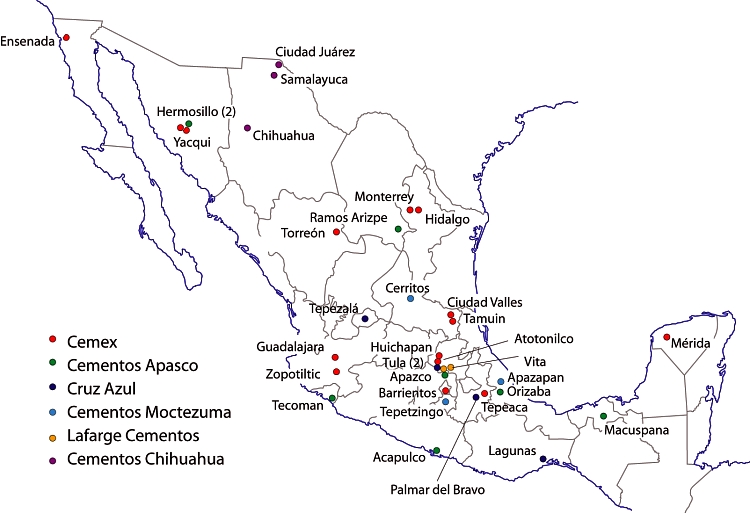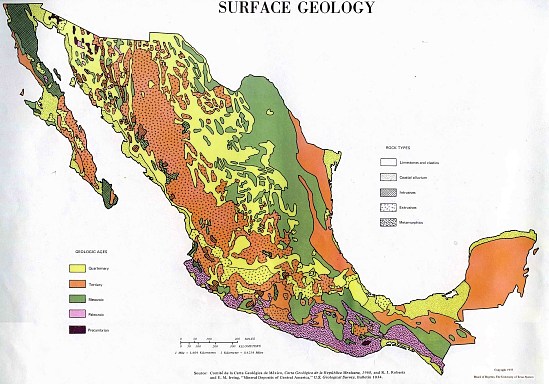In a recent post we saw how Mexico is one of the world’s leading cement manufacturing countries:
The map shows the location of the 34 cement plants currently operating in Mexico. They include 15 belonging to Cemex, 7 to Holcim Apasco, 4 to Cruz Azul, 3 to Cementos Chihuahua, 3 to Cementos Moctezuma and 2 to Lafarge. A new company, Cementos Fortaleza (part-owned by Carlos Slim, the world’s richest man), is due to open in the state of Hidalgo early next year.

Cement plants in Mexico, 2011. Credit: Tony Burton / Geo-Mexico; all rights reserved. Click to enlarge.
According to the Center for Clean Air Policy’s “Sector-based Approaches Case Study: Mexico”,
“The northern region of the country has traditionally been the largest consumer of cement, accounting for 48% of sales mainly for use in infrastructure construction projects, housing and office complexes, and other construction activities. Central Mexico is also a relatively strong market for domestic producers. However, the primary use differs somewhat in that the main source of demand is from construction of new buildings such as hotels and office complexes. The relatively slower pace of economic growth in southern Mexico accounts for the lower share (17%) of domestic cement sales in the south.”
The paucity of cement plants in southern Mexico is particularly well reflected by the map.
The main raw material for cement is limestone. The distribution of cement plants in Mexico tends to follow the distribution of “limestones and clastic rocks” (rocks made of particles of other rocks) on the map of Mexico’s surface geology.
Related post:

Sorry, the comment form is closed at this time.